
StevenC
-
Posts
133 -
Joined
-
Last visited
Content Type
Profiles
Forums
Store
Help Articles
Posts posted by StevenC
-
-
-
I was reading Alice Feiring's book, "Naked Wine," where towards the beginning she's drinking a wine from Sonoma and asks the winemaker why he used commercial yeast in it when he said he had switched (as it turned out, in later vintages) to natural yeast.
How would you tell that a winemaker used commercial yeast as opposed to relying on natural/indigenous/ambient yeast?
I'm guessing the following might be signs, but are there any others?
Natural yeast: higher volatile acidity, funkier aromas from more diverse yeasts, maybe less exuberant fruit
Commercial yeast: less volatile acidity, absence of funky aromas, maybe higher alcohol level, maybe some surprising fruit aromas for the variety/region (for example, banana in Beaujolais, yellow apple in Muscadet, and so forth)
I'd assume, however, that many of these things could also be due to other reasons...
-
Thank you!!
-
On vacation in Vietnam, I was walking through a street market in District 4 of Ho Chi Minh City yesterday when I spotted these things. They have a soft black shell that you can peel open with your fingers (leaving inky black residue on your hands), with a soft nut inside that's like a young Brazil nut.
Does anyone know what these are??
-
When a white veal stock ends up too dark and opaque, is there a way to rescue it and remove some of the discoloration? Perhaps by clarifying it with some ground veal and egg whites, like you'd do for a consomme?
Some background: I've been going through a bit of a classical French phase for the past few weeks, and having recently come upon a great source for veal bones, I've been venturing into making white veal stock as a basis for some classical sauce experiments. I made my first batch last week, and it turned out perfect. I used bones and shanks of uniform size with a split calf's foot, blanched everything according to the guidelines in the French Laundry cookbook, replaced the water, rinsed everything, and then cooked it at 170 degrees F for 8 hours. The stock was clear, with a wonderful golden color and great body, and had an almost custardy aroma. Totally different from and much more subtle than white chicken stock.
Anyway, last night I made a bigger batch with larger, unbroken shank bones, among other things. I sensed I was in for trouble when the bones threw off so much blood during the blanching phase that the water turned bright crimson and then dark brown-gray. I threw out the blanching water again, rinsed the bones, and started the stock, but I think the larger bones continued to throw off raw blood into the stock, darkening the end product. Also, I cooked the stock at a lower temperature (160) this time for ten hours--perhaps not hot enough for the proteins to coagulate out of the stock? I was surprised at how little scum rose to the surface throughout the entire process.
-
Not counting my foreign-language cookbooks (unfortunately, this is usually the best way to get a no-holds-barred approach to local cuisine), I'd add the following, in addition to those recommended by others:
Japanese Cooking: A Simple Art (Shizuo Tsuji)
Fred Plotkin's two Italian cookbooks, on Liguria and Friuli-Venezia Giulia... I'd wish he'd do cookbooks on Lazio, Piemonte, Sardegna and Sicily!
Paula Wolfert's books on Moroccan and Southwestern French cooking--you've gotta admire any cookbook that has a recipe for tajine with agar wood and ambergris
Zarela Martinez's book on Oaxacan cookery (The Food and Life of Oaxaca)
Practical Korean Cooking (I think there's even a recipe for a raw liver-and-tripe dish)
-
-
Nick Malgieri's Sweet Italian Desserts is excellent. It's the Italian dessert book I use most.
-
Interesting suggestions. I'm going to experiment with a few approaches. I'm also going to try substituting powdered sugar for half the sugar in the recipe--I'm hoping the cornstarch will have a drying effect. Part of the problem, I think, is that the recipe has you bake the pumpkin pie partially, and then you put the streusel on top and bake it for 20 minutes more. So, the steam coming up from the custard moistens the streusel.
-
So, I have this nice-tasting recipe for pumpkin pie with ginger streusel. Everything works well except for the streusel, which always comes out dull and flat:
The recipe I used has the following proportions, by volume:
4 parts flour
2 parts walnuts
2 parts brown sugar
2 parts soft butter
1 part ground candied ginger
You bake it at 350F (175C) for 25 minutes.
I'd like something that looks more cragged and livelier.
Any suggestions???? Other recipes seem all over the place. A German recipe on egullet has equal proportions (by weight) of flour, ground almonds and butter, with almost twice the proportion of sugar. Another recipe I saw has a 4:3:2:1 ratio (by volume) of flour to sugar to ground nuts to butter.
Another thing: I'm also thinking of adding dried milk powder to the dough to improve the browning. Thoughts?
-
I've been doing some research into this. The authentic ingredient, mustard seed oil, is a distillate of the chemical (Allyl isothiocyanate) that results from the reaction of two components in mustard when the seeds are ground and mixed with water or another liquid. It's apparently banned as an additive in the United States, and I can understand why... years ago, my grandmother brought a bottle back from Italy to use in making mostarda. When she's open the tiny bottle, she'd put a wet dishcloth over her face and add no more than a single drop of liquid to the mostarda. Even with this minute amount, the entire kitchen would immediately fill up with a noxious mustard smell, burning your nasal lining. The mostard was fantastic, however. It had the same effect as a powerful kick of wasabi.
I'm thinking of grinding black mustard seeds in a mortar and then soaking them in some grain alcohol--I think the chemical in question may be more soluble in alcohol than in water. Afterwards, I'd add it to the mostarda. Has anyone every tried something like this?
-
When I want to make fresh pasta with a little more bite I substitute 40% of the 00 flour with durum wheat semolina. I would use proper Italian stuff but it almost impossible to buy in domestic quantities here in the UK so I use the fine ground semolina used in Indian desserts. It's much cheaper and gives the desired results.
Same here. For some pasta I use all semolina, I love the flavor and the firmness, and am lucky to have a local source for it. Wherever you find it, it does need to be very finely milled. I remember the first time I tried to make pasta, using a semolina flour that was coarsely ground, not knowing any better. Disaster.
Interesting. Don't you find that using semolina, even finely ground semolina, adds a gritty texture to the fresh pasta? I use 100% semolina when I make southern Italian eggless pasta by hand (spaghetti and such), but I always mix the semolina with near-boiling water, which seems to dissolve the grittiness.
-
What texture are you trying to get excactly?
It's really about the kneading and the rolling to get it just right.
Ingredients wise you just need 100g of ideally type '00'flour to 1 egg.
Making taglliatelle is the same as making any other pasta and it is just the way it is cut that makes it taglliatelle which you have shown in that video in your post.
This is correct. I try to aim for the "al dente" texture that you find in fresh pasta in Emilia Romagna, but seldom outside of that region. (Many people say that you aren't supposed to get an al dente texture with fresh pasta, but the fresh pasta in Emilia Romagna does have a particular resistant texture that I like.) So, I knead the hell out the dough. If I'm using a pasta machine, I put it through several passes of each setting. Once it's rolled out and cut, I let it dry on hangers. Then, I boil it in salted water very, very briefly--really, no more than a quick parboil--before finishing it in a saute pan with the sauce.
-
-
I generally agree that fixation on authenticity can be stifling, not to mention pedantic, especially when you can find variations on carbonara in Italy itself that have onions or zucchini for a sweet counterpoint, or that substitute shellfish for the guanciale (I once had an amazing carbonara di mare in Livorno).
That said, I think the question of what's an authentic carbonara is interesting. From what I've been able to tell, a carbonara dish is part of a family tree of traditional Roman pasta dressings that almost reminds one of French sauce derivations. (You add one or two ingredients to a more basic sauce, and you get a completely different sauce.) The "mother sauce" here seems to be cacio e pepe--grated pecorino romano and black pepper, with maybe a little olive oil. Add some guanciale to this base, and it becomes pasta alla gricia. Add eggs to the gricia, and it becomes carbonara. Take away the eggs and add tomatoes and hot pepper, and you've got an amatriciana. Go back to a carbonara but use egg fettuccine, substitute parmigiano for the pecorino and prosciutto for the guanciale, and you've got fettuccine alla papalina.
Also, there's a lot to be said about simplicity and emphasizing the quality of a very limited number of ingredients. The very first pasta dish I ever had in Italy, years ago, was a painfully simple spaghetti alla carbonara at a little hole in the wall near the Campo de'Fiori in Rome. It blew me away--perfectly cooked spaghetti, just enough pepper, and a sauce creamy with eggs and melted pork fat. I had never eaten a pasta dish like that before, and that's the effect I like to reproduce when I make a spaghetti alla carbonara for guests now. Pile too many ingredients on top of this, however, and the ship capsizes.
-
Great thread.
A couple of things that really get me going:
- Substituting bacon for pancetta, especially in pasta dishes. Totally different result. Would you substitute smoked fish for baccala in a recipe that called for baccala?
- "All-purpose" flour for everything, especially in cake recipes
- Bottled lemon or lime juice as a substitute for fresh
- Insipid green bell peppers as a substitute for poblanos. Actually, green bell peppers in anything (they should be banned)
-
I've bought a few pounds of fresh blueberries, and I'm trying to make fried blueberry pie for the first time. For the filling, I used the recipe from America's Test Kitchen, which calls for cooking down half the blueberries, adding some grated apple (for the pectin), and some tapioca starch. Worked perfectly--the filling was neither runny nor gelled.
The problem was with the dough. I followed another recipe's instructions for dough--the recipe was specifically for fried fruit pies--but it came out far too flaky, since it contained only shortening and no eggs. The little turnover pies were delicious, but they fell apart as we tried eating them.
Does anyone have a better recipe for fried pie dough? I think the problem with the dough was that it needed some egg in it to hold together properly.
P.S. I am NOT going to resort to canned biscuit dough, which a lot of recipes on the Internet call for.
-
That's too bad. I've bought great sour cherries back in New York, and all kinds of cherries in Europe, particularly the dark, bitter cherries that are absolutely terrific in pastry and preserves. Well, if there's been a renaissance in heirloom apples and tomatoes, maybe heirloom cherries will be the next thing...
-
I'm in San Francisco, and I've been scouring the local stores and farmers markets for cherries, but the only varieties that seem to be on sale anywhere in the city are Bing and Rainier, which are nice but a little boring. (I've come to think of them as the Red Delicious and Yellow Delicious, respectively, of cherry varieties... they're sweet and juicy, but they don't have anywhere near the intense cherry flavor of some other varieties.) I'd love to get my hands on other kinds of cherries, particularly sour cherries. Has anyone seen any other varieties?
-
Take a look at the photo about a quarter of the way down this page: http://www.syrupandtang.com/200712/la-macaronicite-3-the-more-reliable-macaron-recipe-and-a-few-tips/
An oven temperature of 300F (149 celsius), which is around what I've been using, may be too low, according to this website. I'm going to try a slightly higher oven as recommended--maybe 165 c (330F or so)--and see what happens. My macarons did puff up enormously in the lower oven, more in fact than I would have liked. (The assembled macarons were too tall, although they were nicely domed.) I was concerned about having them brown too quickly, but I think that putting them in the middle of the oven and covering the upper grill with foil may prevent that from happening.
-
I've been making macarons, and they've been turning out pretty well, though the most recent batches have been hollow - they have a crisp, smooth, shiny outer shell and a foot, but between the shell and foot is just empty space. They taste great and seem perfect in every other way.
Any idea why this is happening? This happened across the board, for both the larger and smaller shells that I piped out.
I've been finding the same thing too. I use the recipe in Pascal Rigo's American Boulangerie, and I don't have any problems with a shiny outer shell, legs, and so forth. I don't exactly use farm-fresh eggs, but I've never bothered to age my egg whites or add meringue powder. (I've found, though, that I get terrible results if I use a mixer with a stainless steel bowl, so I only use a copper bowl, and I whisk the egg whites by hand.) The result has always been macarons that look perfect from the outside.
But all my macarons have an empty space between the shell and the bottom. I've been tempted to try Pierre Herme's recipes that use an Italian meringue. I'm thinking that it might result in a denser texture, with slightly less egg-white expansion in the oven . Has anyone noticed a difference in this regard?
-
Thanks for the tips. I think we're going to order one from Golden Gate Meat in the Ferry Building.
Canadian geese are quite an untapped source of protein... not sure if I'd want to eat one, though, any more than I'd want to eat a city pigeon. ;-)
-
Any suggestions on where I could order a free-range fresh goose in the San Francisco area? In particular, do any farms in Marin/Sonoma sell geese? (A friend and I are taking a novel approach to Thanksgiving this year...)
Thanks in advance!!!
-
I've made hand-raked couscous before--I find the result much more digestible and texturally interesting than the dried, boxed kind.
I've found it much easier, however, simply to form a ball of semolina dough and rake it across the mesh of a fine chinois strainer from the inside. While not authentic, this method seems to have the same effect, with little grains of couscous falling into the plate underneath. Does this count??

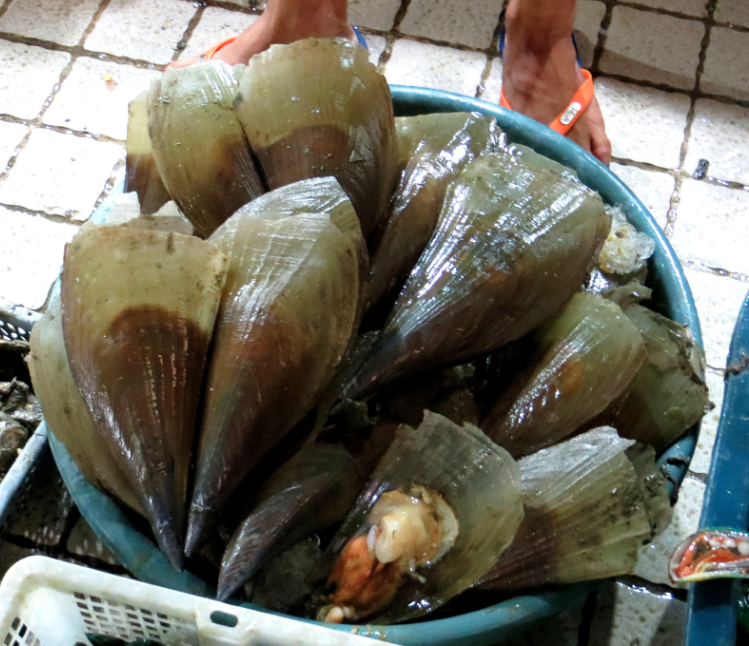
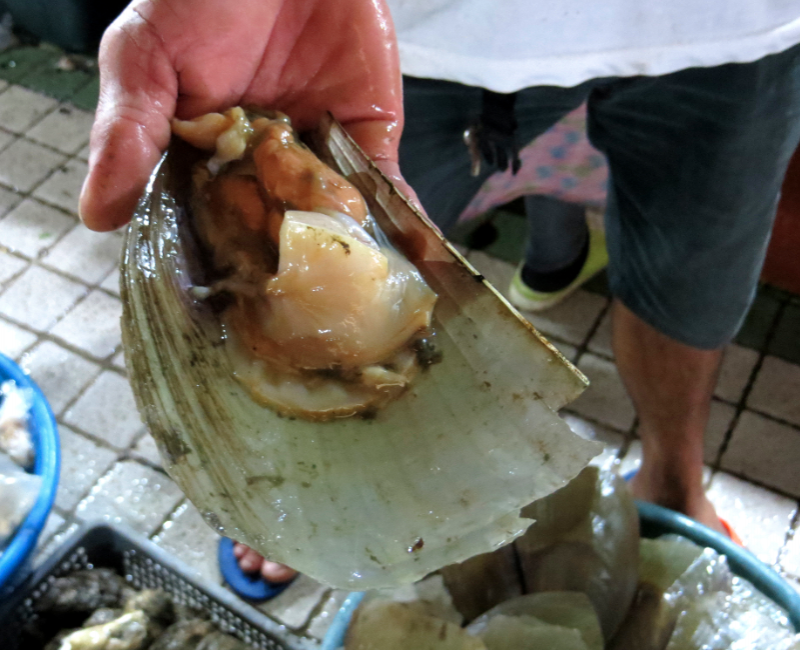
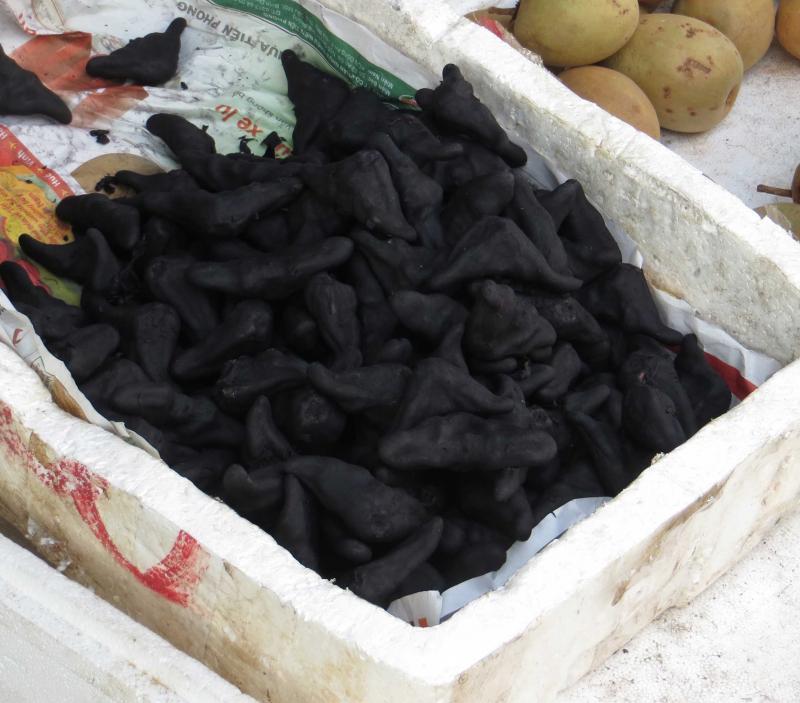
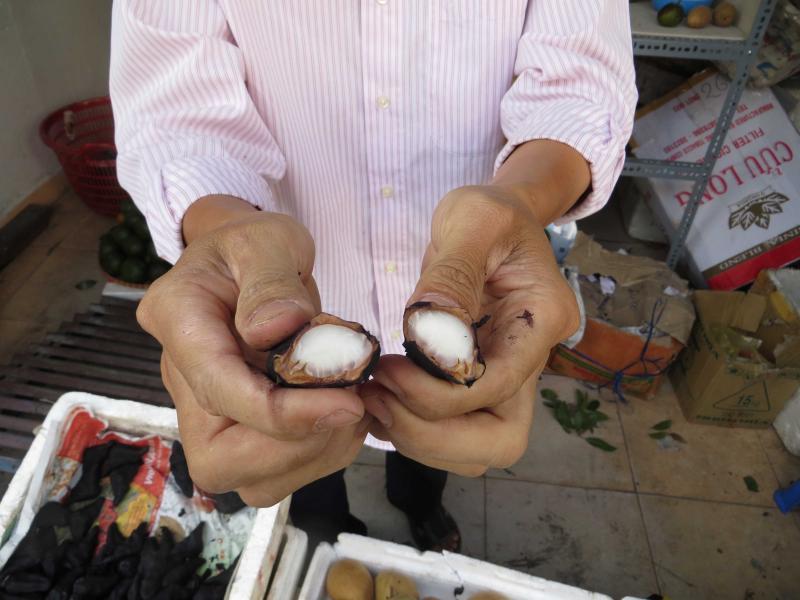
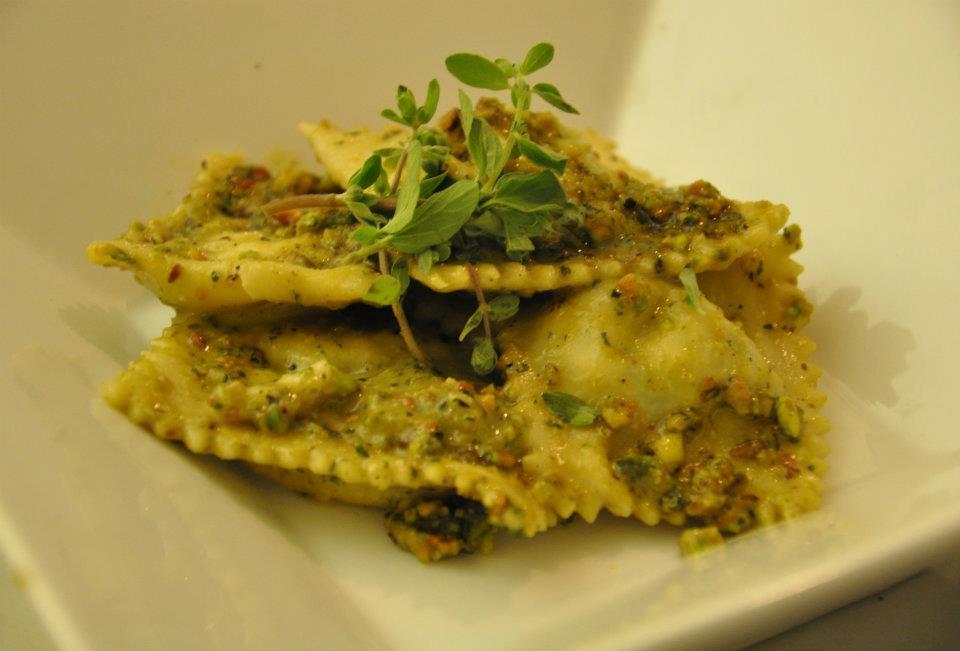

Does anyone know what this sort of scallop is called?
in Elsewhere in Asia/Pacific: Cooking & Baking
Posted
Thank you for all your responses. Liuzhou, that dish you posted looks delicious!